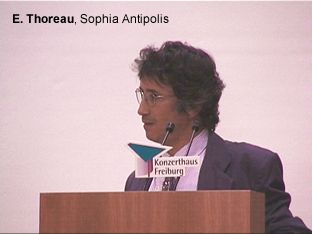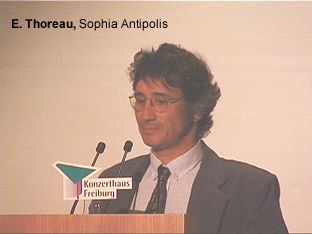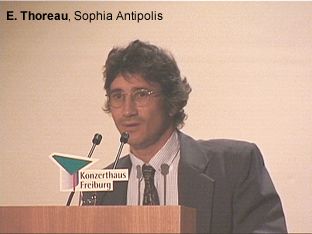| Home |
| Weitere Links: |
| |
Computer Aided Drug Design in Dermatology
Dr. Etienne Thoreau, Galderma Research & Development, Sophia Antipolis cedex Valbonne, Frankreich
Receptors belonging to the Nuclear Hormone Receptor superfamily (NHRs) represent an important percentage of the molecular targets involved in dermatology: drugs acting upon Retinoic Acid Receptors (RARs, RXRs), Vitamin D Receptor, and Steroid Hormone Receptors i.e. glucocorticoids (GR) are well established therapeutic agents for diverse dermatological diseases like Psoriasis, Acne or Atopic Eczema to only cite the most important ones. Moreover, other NHRs are expressed in the skin where they play a role in skin cell proliferation and differentiation and thus represent potential targets for new approaches to therapies for skin disorders.
These receptors are muitidomain molecular switches, which are conformationally activated by hormone binding in their Ligand Binding Domain (LBD). Their DNA Binding Domain (DBD) is responsible for anchoring the receptors in the promoter region of target genes on specific DNA sequences. They transduce the hormonal signal by activating or repressing the transcription of genes through interaction with coactivator or corepressor proteins and other components of the transcriptional machinery.
In recent years, the 3D crystal structures of the DBD and the LBD of several NHRs have been obtained by X-ray diffraction. More importantly, the 3D structures of different LBDs have been solved under different conformations, complexed with different kinds of ligands: agonists, selective agonists, antagonists and partial agonists. These molecular snapshots shed light on the structural characteristics underlying the selectivity of dermatological drugs and the conformational changes responsible for their biological activity.
Molecular modelling and structure-based drug design can help to provide more selective and powerful ligands.



Copyright
© 2000 - 2024
Institute for Dermopharmacy GmbH
webmaster@gd-online.de
Haftungsausschluss